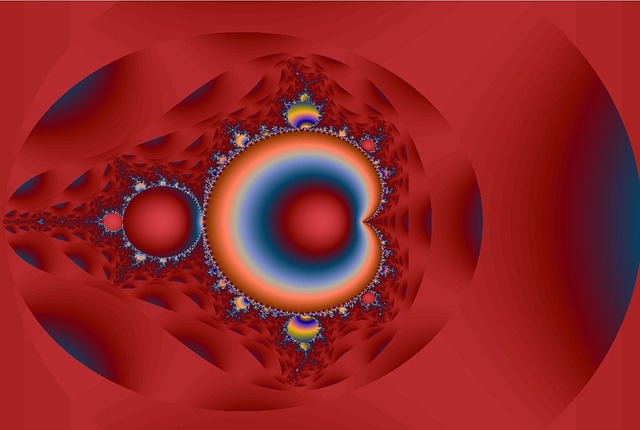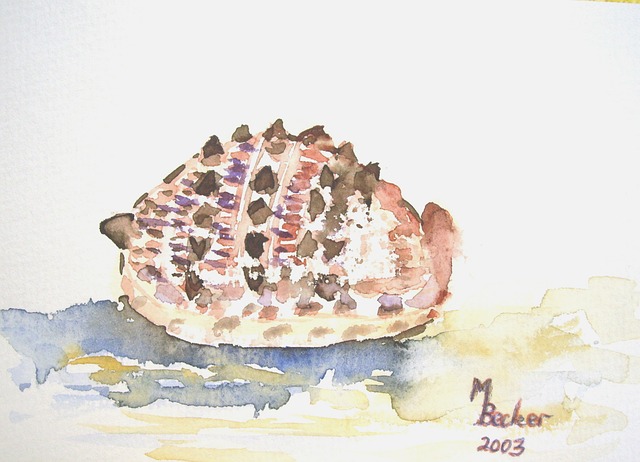نظرية الزمر الأولية
المبرهنات الأولية حول الزمر
تعريف الزمرة
يمكن تعريف زمرة (G,*) :
G is a مجموعة و * عملية ثنائية تجميعية على G, تخضع للقواعد التالية (أوما يدعى بدهيات):
- 1. (G,*) تملك انغلاقا. That is, اذا كان a وb ينتميان ل G, عندئذقد يكون a*b من ضمن G أيضا
- 2. العملية * تجميعية, أي انه :
, اذا كان a, b, وc عناصر من G, عندئذقد يكون (a*b)*c=a*(b*c).
- 3. G تحوي عنصر حيادي, يرمز له غالبا ب e, أي أنه من اجل جميع قيم a من ضمن Gفإن :
e*a=a*e=a.
- 4. جميع عنصر من الزمرة (G,*) له عنصر معاكس; اذا كانت a من G, عندئذ يوجد عنصر b ضمن بحيث يحقق :
a*b=b*a=e.
البدهيات 1 و2 تنتجان بشكل تلقائي من تعريف العملية الثنائية التجميعية لذلك يمكن إهمالها عادة .
Where no danger of confusion is possible, the group (G,*) will simply be referred to as "the group G"; but it is important to remember that the operation "*" is fundamental to the description of the group. For example, in the real numbers, we can speak of both the group (R,+), which is the additive group of reals with identity 0; and the group (R#, *), which is the multiplicative group of the reals (excluding 0), which has identity 1.
We can state simpler versions of A3 and A4:
- A3'. G contains an identity element, often denoted e, such that for all a in G, a*e=a.
- A4'. Every element in (G,*) has an inverse; for all a in G, there exists an element in G, denoted a -1, such that a*a -1 = e.
In the sequel, we will assume the axioms A1, A2, A3' and A4'. We first show in Theorem 1.1 and 1.2 that these assumptions actually imply A3 and A4. We will then go on to prove several other theorems, the most important of which are that every group has a unique identity, and every element in a group has a unique inverse.
Theorem 1.1: For all a in G, a -1*a = e.
- By expanding a -1*a, we get
- a -1*a = a -1*a*e (by A3')
- a -1*a*e = a -1*a*(a -1*(a -1) -1) (by A4', a -1 has an inverse denoted (a -1) -1)
- a -1*a*(a -1*(a -1) -1) = a -1*(a*a -1)*(a -1) -1 = a -1*e*(a -1) -1 (by associativity and A4')
- a -1*e*(a -1) -1 = a -1*(a -1) -1 = e (by A3' and A4')
- Therefore, a -1*a = e
Thus every right inverse in a group is necessarily a left inverse.
Theorem 1.2: For all a in G, e*a = a.
- Expanding e*a,
- e*a = (a*a -1)*a (by A4)
- (a*a -1)*a = a*(a -1*a) = a*e (by associativity and the previous theorem)
- a*e = a (by A3)
- Therefore e*a = a
Thus, the identity in a group is both a left and right identity. (We will justify the use of the term "the identity" shortly).
The following theorem demonstrates a fundamental property enjoyed by groups, which other more general structures (such as semigroups) lack:
Theorem 1.3: For all a,b in G, there exists a unique x in G such that a*x = b. Also, for all a,b in G, there exists a unique y in G such that y*a = b. These facts are together sometimes known as the Latin square property. We present a proof of the first part only (the proof of the second part is similar):
- Certainly, at least one such x exists, for if we let x = a -1*b, then x is in G (by A1, closure); and then
- a*x = a*(a -1*b) (substituting for x)
- a*(a -1*b) = (a*a -1)*b (associativity A2).
- (a*a -1)*b= e*b = b. (identity A3).
- Thus an x always exists satisfying a*x = b.
- To show that this is unique, if a*x=b, then
- x = e*x
- e*x = (a -1*a)*x
- (a -1*a)*x = a -1*(a*x)
- a -1*(a*x) = a -1*b
- Thus, x = a -1*b
Theorem 1.4: The identity element of a group (G,*) is unique.
- a*e = a (by A3)
- Apply theorem 1.3, with b = a.
Alternative proof: Suppose that G has two identity elements, e and f say. Then e*f = e, by A3', but also e*f = f, by Theorem 1.2. Hence e = f.
As a result, we can speak of the identity element of (G,*) rather than an identity element. Where different groups are being discussed and compared, often eG will be used to identify the identity in (G,*). By analogy to the group of reals, the identity is also sometimes denoted as 1 (or 1G) in groups that are written multiplicatively, and as 0 (or 0G) in groups that are written additively.
Theorem 1.5: The inverse of each element in (G,*) is unique; equivalently, for all a in G, a*x = e if and only if x=a -1.
- If x=a -1, then a*x = e by A4.
- Apply theorem 1.3, with b = e.
Alternative proof: Suppose that an element g of G has two inverses, h and k say. Then h = h*e = h*(g*k) = (h*g)*k = e*k = k (equalities justified by A3'; A4'; A2; Theorem 1.1; and Theorem 1.2, respectively).
As a result, we can speak of the inverse of an element x, rather than an inverse. When the group operation is written multiplicatively (as it is here), we denote the inverse of x as x -1. When the group is written additively (i.e., in (G,+)), the inverse of x is written as -x.
Theorem 1.6: For all a belonging to a group (G,*), (a -1) -1=a.
- a -1*a = e.
- Therefore the conclusion follows from theorem 1.4.
Theorem 1.7: For all a,b belonging to a group (G,*), (a*b) -1=b -1*a -1.
- (a*b)*(b -1*a -1) = a*(b*b -1)*a -1 = a*e*a -1 = a*a -1 = e
- Therefore the conclusion follows from theorem 1.4.
The results of the following theorem are often called the cancellation rules for a group:
Theorem 1.8: For all a,x,y, belonging to a group (G,*), if a*x=a*y, then x=y; and if x*a=y*a, then x=y.
- If a*x = a*y then:
- a -1*(a*x) = a -1*(a*y)
- (a -1*a)*x = (a -1*a)*y
- e*x = e*y
- x = y
- If x*a = y*a then
- (x*a)*a -1 = (y*a)*a -1
- x*(a*a -1) = y*(a*a -1)
- x*e = y*e
- x = y
Theorem 1.9: For every a in a group, aman = am+n = anam and (am)n = (an)m = anm. (This generalizes the associativity.)
Given a group (G, *), if the total number of elements in G is finite, then the group is called a finite group. The order of a group (G,*) is the number of elements in G (for a finite group), or the cardinality of the group if G is not finite. The order of a group G is written as |G| or (less frequently) o(G).
A subset H of G is called a subgroup of a group (G,*) if H satisfies the axioms of a group, using the same operator "*", and restricted to the subset H. Thus if H is a subgroup of (G,*), then (H,*) is also a group, and obeys the above theorems, restricted to H. The order of subgroup H is the number of elements in H.
A proper subgroup of a group G is a subgroup which is not identical to G. A non-trivial subgroup of G is (usually) any proper subgroup of G which contains an element other than e.
Theorem 2.1: If H is a subgroup of (G,*), then the identity eH in H is identical to the identity e in (G,*).
- If h is in H, then h*eH = h; since h must also be in G, h*e = h; so by theorem 1.4, eH = e.
Theorem 2.2: If H is a subgroup of G, and h is an element of H, then the inverse of h in H is identical to the inverse of h in G.
- Let h and k be elements of H, such that h*k = e; since h must also be in G, h*h -1 = e; so by theorem 1.5, k = h -1.
Given a subset S of G, we often want to determine whether or not S is also a subgroup of G. One handy theorem that covers the case for both finite and infinite groups is:
Theorem 2.3: If S is a non-empty subset of G, then S is a subgroup of G if and only if for all a,b in S, a*b -1 is in S.
- If for all a, b in S, a*b -1 is in S, then
- e is in S, since a*a -1 = e is in S.
- for all a in S, e*a -1 = a -1 is in S
- for all a, b in S, a*b = a*(b -1) -1 is in S
- Thus, the axioms of closure, identity, and inverses are satisfied, and associativity is inherited; so S is subgroup.
- Conversely, if S is a subgroup of G, then it obeys the axioms of a group.
- As noted above, the identity in S is identical to the identity e in G.
- By A4, for all b in S, b -1 is in S
- By A1, a*b -1 is in S.
The intersection of two or more subgroups is again a subgroup.
Theorem 2.4: The intersection of any non-empty set of subgroups of a group G is a subgroup.
- Let {Hi be a set of subgroups of G, and let K = ∩{Hi .
- e is a member of every Hi by theorem 2.1; so K is not empty.
- If h and k are elements of K, then for all i,
- h and k are in Hi.
- By the previous theorem, h*k -1 is in Hi
- Therefore, h*k -1 is in ∩{Hi .
- Therefore for all h, k in K, h*k -1 is in K.
- Then by the previous theorem, K=∩{Hi is a subgroup of G; and in fact K is a subgroup of each Hi.
In a group (G,*), define x0 = e. We write x*x as x² ; and in general, x*x*x*...*x (n times) as xn. Similarly, we write x -n for (x -1)n.
Theorem 2.5: Let a be an element of a group (G,*). Then the set {an: n is an integer is a subgroup of G.
A subgroup of this type is called a cyclic subgroup; the subgroup of the powers of a is often written as <a>, and we say that a <a>.
If there is a positive integer n such that an=e, then we say the element a has order n in G. Sometimes this is written as "o(a)=n".
If S and T are subsets of G, and a is an element of G, we write "a*S" to refer to the subset of G made up of all elements of the form a*s, where s is an element of S; similarly, we write "S*a" to indicate the set of elements of the form s*a. We write S*T for the subset of G made up of elements of the form s*t, where s is an element of S and t is an element of T.
If H is a subgroup of G, then a left coset of H is a set of the form a*H, for some a in G. A right coset is a subset of the form H*a.
Some useful theorems about cosets, stated without proof:
Theorem: If H is a subgroup of G, and x and y are elements of G, then either x*H = y*H, or x*H and y*H have empty intersection.
Theorem: If H is a subgroup of G, every left (right) coset of H in G contains the same number of elements.
Theorem: If H is a subgroup of G, then G is the disjoint union of the left (right) cosets of H.
Theorem: If H is a subgroup of G, then the number of distinct left cosets of H is the same as the number of distinct right cosets of H.
Define the index of a subgroup H of a group G (written "[G:H]") to be the number of distinct left cosets of H in G.
From these theorems, we can deduce the important Lagrange's theorem relating the order of a subgroup to the order of a group:
Lagrange's theorem: If H is a subgroup of G, then |G| = |H|*[G:H].
For finite groups, this also allows us to state:
Lagrange's theorem: If H is a subgroup of a finite group G, then the order of H divides the order of G.
مراجع
- Group Theory, W. R. Scott, Dover Publications, ISBN 0-486-65377-3
- Groups, C. R. Jordan and D. A. Jordan, Newnes (Elsevier), ISBN 0-340-61045-X
















